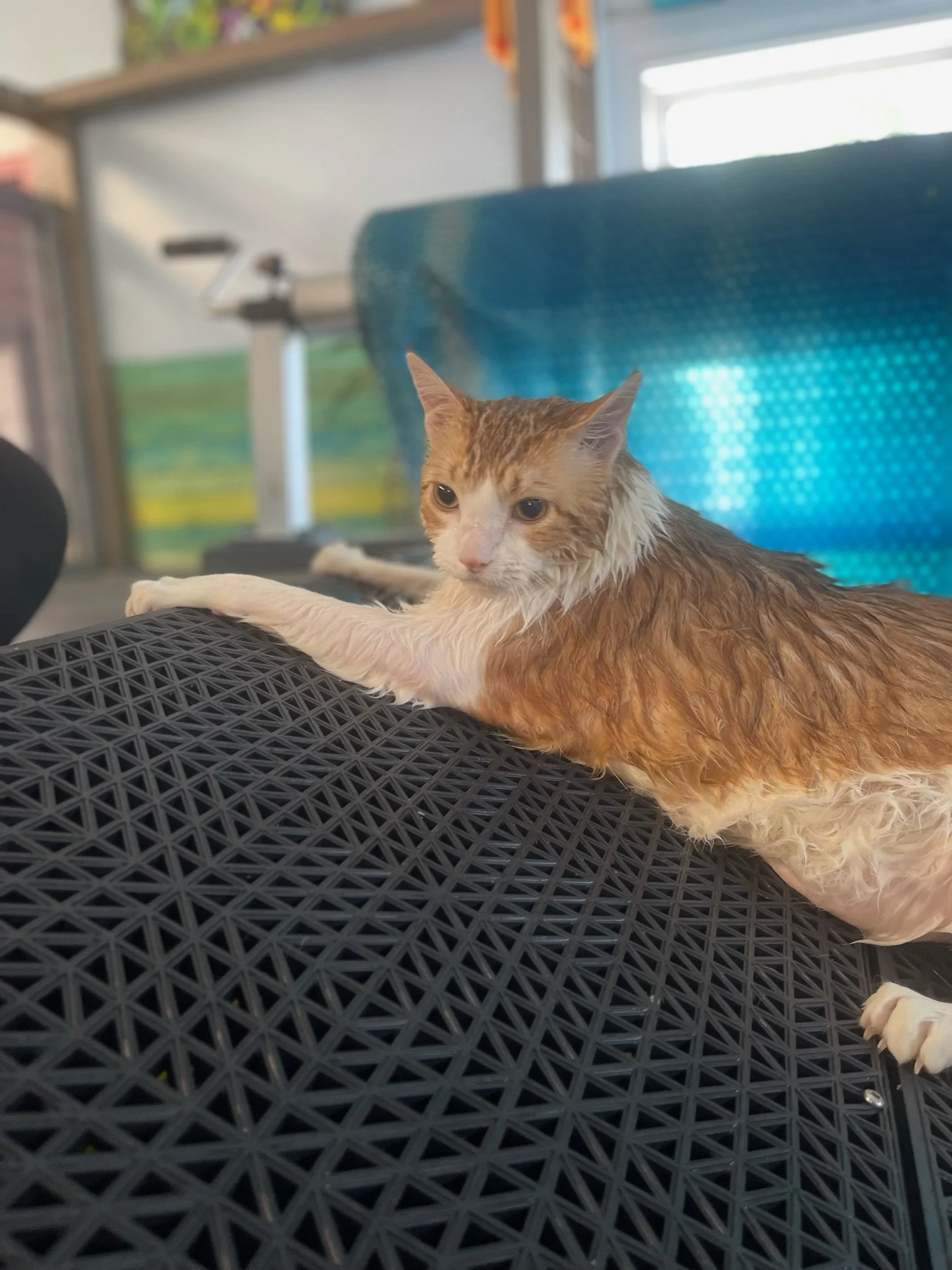Did someone say Cats??
Frisky Pup is happy to take on the swimming of your feline friends. Swimming is a great exercise, and it can be hard to get a cat to go for a walk with you. If you have any questions or concerns regarding the rehabilitation or weight management of your cat, hydrotherapy might work for you. Give us a call, and we can talk about setting up a plan that would suit your needs.
The Hydrotherapist will be in the water with your cat and will assess what needs to be done to work on specific areas of concern. This may differ from session to session and will change in duration according to the specific needs and conditions of your cat.
The sessions are therapeutic in nature.
* A session is a maximum of 30 minutes in the water, but has a booked time allotment of 60 minutes for a pre-swim interview and jacket fitting and post-swim rinse and dry.
While most people believe that cats hate water, not all of them do.
Tigers and jaguars are fond of swimming, and plenty of domestic cats think splashing around in the water dish is fun.
Meet 10 cat breeds that swim against the current when it comes to getting wet.
Did you know?…
Maine Coon: This big, furry lug was a popular ship’s cat in his native New England. The Maine Coon boasts a dense, water-repellent coat that comes in many colors and patterns.
Norwegian Forest Cat: The Wegie, as he’s nicknamed, is an intrepid fisher who has been known to snag fish from lakes and streams. Cousin to the Maine Coon, he also sports a thick coat that repels water.
Abyssinian: The adventurous Aby hails from Indian Ocean coastal areas, so it’s no surprise that he takes to water play. Don’t be surprised when your Aby learns to turn on the faucet so he can have his own personal water park.
Manx: A native of the Isle of Man, off the coast of Britain, the Manx is an island cat par excellence. It’s not unusual to find him dabbling his paws in his water dish or even joining his person in the shower. His double coat can be short or long and comes in many different colors and patterns.
Japanese Bobtail: Keep an eye on him to make sure he isn’t raiding your koi pond or aquarium, and check your faucet frequently to make sure he hasn’t turned it on to run a bath. His tricolor coat of red and black on a white background also comes in other colors and patterns and is water-resistant
Bengal: This cat has the exotic appearance of a small wildcat, and indeed he was created by crossing an Asian Leopard Cat with a domestic feline. The breed today doesn’t retain any wild blood, but that heritage is probably the source of the Bengal’s love of water. If given half a chance, he will happily join you in the bath or shower.
American Bobtail: This short-tailed cat is the result of a natural genetic mutation. Along with that mutation, apparently, came a love of water. He can often be found dunking his toys in water.
Savannah: This large, active, and curious cat was created by crossing the serval, a small wild cat, with domestic cats. That no doubt accounts for the pleasure he takes in playing with and in water. He is very smart and can be a handful.
Turkish Angora: Don’t let his delicate, beautiful appearance fool you. Like his cousin the Turkish Van, the Angora is fond of water and will play in it readily.
Turkish Van: Legend has it this Turkish breed swam ashore from Noah’s Ark after it came to rest on Mt. Ararat. Nicknamed “swimming cat” for his love of playing in water, the Turkish Van won’t hesitate to explore any body of water he comes across — from your toilet to your swimming pool. He can be a klutz, so make sure he can swim in case he falls in. (It’s not always a natural skill.) You may want to provide him with a child’s pool that he can lie in during the heat of summer.




